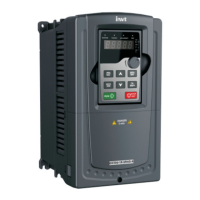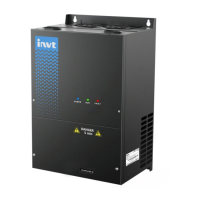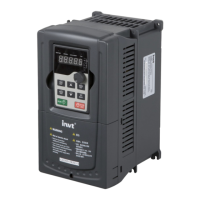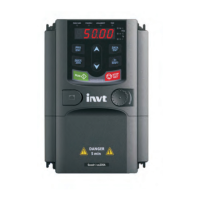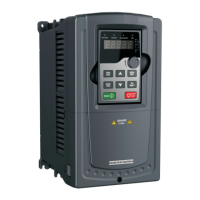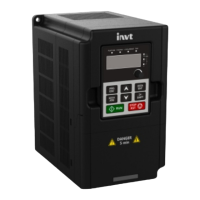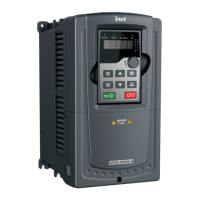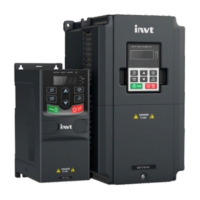Goodrive30 Series VFD Communication protocol
-139-
following table describes the codes and definitions of the error message responses.
The command code received by the upper computer is not
allowed to be executed. The possible causes are as follows:
• The function code is applicable only on new devices and is not
implemented on this device.
• The slave is in the faulty state when processing this request.
For the VFD, the data address in the request of the upper
computer is not allowed. In particular, the combination of the
register address and the number of the to-be-transmitted bytes is
invalid.
The received data domain contains a value that is not allowed.
The value indicates the error of the remaining structure in the
combined request.
Note: It does not mean that the data item submitted for storage in
the register includes a value unexpected by the program.
The parameter is set to an invalid value in the write operation. For
example, a function input terminal cannot be set repeatedly.
The password entered in the password verification address is
different from that set in P07.00.
The length of the data frame transmitted by the upper computer is
incorrect, or in the RTU format, the value of the CRC check bit is
inconsistent with the CRC value calculated by the lower computer.
The parameter to be modified in the write operation of the upper
computer is a read-only parameter.
Parameter cannot
be modified in
running
The parameter to be modified in the write operation of the upper
computer cannot be modified during the running of the VFD.
A user password is set, and the upper computer does not provide
the password to unlock the system when performing a read or
write operation. The error of "system locked" is reported.
When returning a response, the slave device uses a function code domain and fault address
to indicate whether it is a normal response (no error) or exception response (some errors
occur). In a normal response, the device returns the corresponding function code and data
address or sub-function code. In an exception response, the device returns a code that is
equal to a normal code, but the first bit is logic 1.
For example, if the master device transmits a request message to a slave device for reading a
group of function code address data, the code is generated as follows:
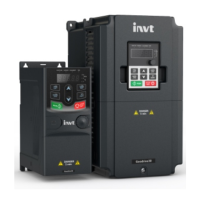
